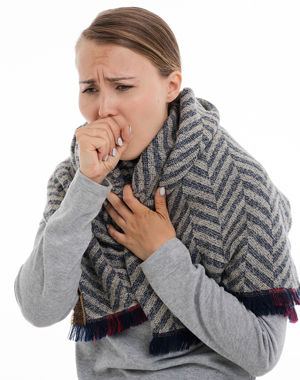Phlebotomy and the "Cough Trick"
A novel way to reduce venipuncture pain
by Dennis Ernst • May 06, 2020

Researchers in Germany recently studied the effect of coughing during a venipuncture as a pain-reduction strategy. The premise of the "cough trick" is to ask the patient to induce one or two voluntary coughs at the same time the venipuncture needle is inserted into the arm. The cough is intended to serve as a means to trick the pain receptors in the brain to process the cough instead of the needle piercing the vein. The team speculated the underlying mechanism to be more than just a distraction for the patient, but activation of the endogenous opioid system to temporarily scramble pain receptors.
To conduct the study, 54 healthy male volunteers were placed into three groups, each receiving a different pain reduction strategy. One group was asked to squeeze a soft rubber ball (weak distraction), a second group was subjected to what the authors referred to as "strong" distraction in the form of constriction inflated to 200 mmHg, likely a blood pressure cuff. A third group had no distraction technique employed. The extent of pain was determined by a visual scale.
The intensity of pain in the group employing the cough trick was significantly less than that of the control group (no distraction intervention) and the group subjected to weak distraction (squeezing the rubber ball). There was no significant difference in the pain assessments for those who employed the cough trick and those who were subjected to the inflated constriction (strong distraction). Therefore, the researchers concluded the cough trick to be an effective means of minimizing the perception of pain during venipuncture.
Those subjected to the cough trick were also assessed for pain after being injected with naloxone, which inhibits the effects of opioids. If the cough trick works because the body's production of natural opioids during the cough, the effect of coughing would be negligible if naloxone was administered prior to the draw. It was. Therefore, the authors concluded the lack of a reduction in pain during a voluntary cough after naloxone was administered is likely due to the involvement of the body's endogenous opioid system.
[Editor's note: This is not the first time we've reported on this technique. In the October, 2012 issue of this newsletter we shared the results of a similar study, which came to the same conclusion in regards to the effect of coughing on venipuncture pain.]
Related Posts and Information
overall rating: my rating: log in to rate
